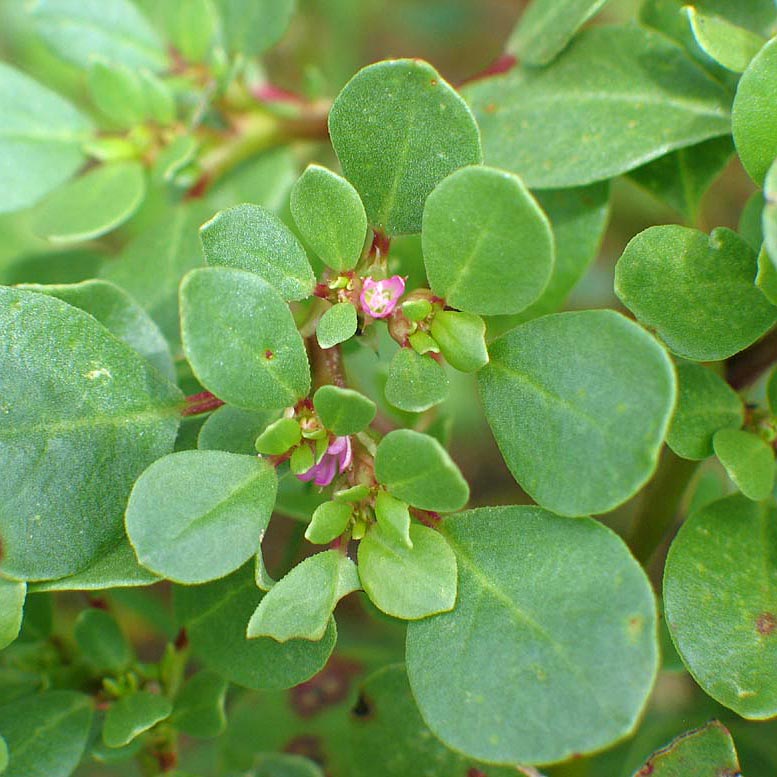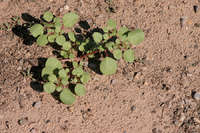|
|
 Leaves Liz Makings @http://swbiodiversity.org, Usage Rights Creative Commons Attribution-ShareAlike (CC BY-SA) |  Plant Patrick Alexander @http://swbiodiversity.org, Usage Rights: Creative Commons Attribution-ShareAlike (CC BY-SA) | | | | |
|
Origin:
Native
Life Cycle:
Annual Similar Species: Portulaca oleracea
General Desc:
Mat forming, semi-succulent, diffusely branched plant; tiny pink, purple, or purplish-pink solitary flowers in leaf axils (between the leaf and stem), partly enclosed by the sheath formed by leaf stipules (leaflike structures at the base of leaf stem).
Identification notes: Ground-hugging plant; opposite, oval, succulent leaves. Similar to P. oleracea which has yellow flowers, this species pink to purplish flowers. Capsules have 2 crests on top, look like mouse ears; flowers/fruits are partly hidden in leaf axils.
Height:
Trailing 8 to 23 inches
Habitat Description: Moist or seasonally dry, usually open, wetlands including alkaline flats, playa lakes, banks of rivers, creeks, roadside depressions, beaches, disturbed areas including gardens, irrigated soils, ditches, fields, ballast, stockyards, sidewalks, railroads.
Plant Communities:
Riparian, Disturbed Areas
Elevation: 1000 - 4000 feet
Color:
Purplish to pink
Shape:
Regular not in clusters
Tubular:
Y
Flowering Period:
Jun - Oct
Description:
Purplish to pink, solitary in leaf axils, partly enclosed by the sheath formed by the stem (petiole) base; sheath (calyx lobes) appearing like 5 petal-like structures, around 1/8 inch long, pink with a green horn on the back near the tip; petals absent.
Leaf Color:
Green
Leaf Type:
Simple
Leaf Shape:
Round or oval
Leaf Margin:
Smooth
Leaf Attachment:
Opposite
Leaves Clasp:
N
Hairs:
Stems
Spines:
N
Leaf Description:
Reddish-green succulent stems, prostrate or with ascending tips (decumbent), diffusely branched to 23 inches; young branches with lines of minute hairs near the bases of leaf stems (petioles). Leaves spoon-shaped, attached at narrow end in unequal pairs.
Fruit Type: Capsule
Fruit Notes: Cylindrical, about 1/4 inch long with prominent crests (look like mouse ears); contains several seeds.
Seed Notes: Ridged seeds reddish-brown to black, about 1/16 inch in diameter.
|
|